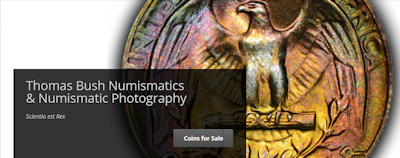Counterfeit Coin Literature Everyone Should Have
 TomB
Posts: 22,090 ✭✭✭✭✭
TomB
Posts: 22,090 ✭✭✭✭✭
I recently bought an original roll of 1932 Washington quarters. The coins are gorgeous and the roll is definitely original as several of the coins have the coffee and tobacco toning that is often seen on 1932 Washingtons while virtually every other coin in the roll has a wonderful blue and yellow cast of toning on each. The blue and yellow toning is what I call phlegmy toning and is quite nice. This is also often seen on 1939 Washingtons as there were many rolls saved of these and quite a few tone in the same manner.
Anyway, a friend of mine asked me if I had checked my quarter roll for the diagnostics of a counterfeit 1932. I had never done so even though I am familiar with this issue. Since the toning was so well matched and original I had never thought the coins would be counterfeit and, in truth, they are genuine. This got me to thinking, however, that many people who collect coins likely do not have much literature regarding deceptive counterfeits that are known in the market. Aside from knowing what a coin "looks" like when genuine, you can arm yourself with a greater breadth and depth of knowledge relatively inexpensively. The ANA has published at least two volumes of thin books, more like pamphlets, that give the diagnostics of known counterfeit issues and also have many photos. These book were published in the '80s and '90s and are still a valuable resource. I have no idea why the ANA does not publicize the existance of these books more heavily, the pessimist in me would think it is perhaps because they are so valuable. These books are still available from a number of dealers and I have seen Stack's recently list them in their book list. Each book costs less than $20 and each is about 100 pages. They are well worth the investment in money to buy them and in time to read and understand them.
Anyway, a friend of mine asked me if I had checked my quarter roll for the diagnostics of a counterfeit 1932. I had never done so even though I am familiar with this issue. Since the toning was so well matched and original I had never thought the coins would be counterfeit and, in truth, they are genuine. This got me to thinking, however, that many people who collect coins likely do not have much literature regarding deceptive counterfeits that are known in the market. Aside from knowing what a coin "looks" like when genuine, you can arm yourself with a greater breadth and depth of knowledge relatively inexpensively. The ANA has published at least two volumes of thin books, more like pamphlets, that give the diagnostics of known counterfeit issues and also have many photos. These book were published in the '80s and '90s and are still a valuable resource. I have no idea why the ANA does not publicize the existance of these books more heavily, the pessimist in me would think it is perhaps because they are so valuable. These books are still available from a number of dealers and I have seen Stack's recently list them in their book list. Each book costs less than $20 and each is about 100 pages. They are well worth the investment in money to buy them and in time to read and understand them.
0

Comments
The Taxay book is good because it gives lots of technical information on how fakes are made, so you can spot the diagnostics.
The Lonesome John books are more like the ANA books in that they are more books with examples of counterfeit coins.
They can be found on eBay sometimes.
Charlie
Go BIG or GO HOME. ©Bill
What do you think about the ANA's Counterfeit Coin Bulletin or are you talking about a "compilation" of the CCB?
Conder101 -- have you been drinking? See your thread above.
Counterfeit Detection a reprint from The Numismatist
Counterfeit Detection a reprint from The Numismatist Volume II
As has also been mentioned, the Taxay book is very good as far as describing how certain counterfeit types are manufactured and its title has already been given by cdmead.
In honor of the memory of Cpl. Michael E. Thompson
Worry is the interest you pay on a debt you may not owe.
"Paper money eventually returns to its intrinsic value---zero."----Voltaire
"Everything you say should be true, but not everything true should be said."----Voltaire
<< <i>Bill Fivaz also has a handy little sprial bound notebook that shows the characteristics of genuine key dates. Stuff that one in your briefcase. >>
That's a useful little guide.
-Amanda
I'm a YN working on a type set!
My Buffalo Nickel Website Home of the Quirky Buffaloes Collection!
Proud member of the CUFYNA
<< <i>
<< <i>Bill Fivaz also has a handy little sprial bound notebook that shows the characteristics of genuine key dates. Stuff that one in your briefcase. >>
That's a useful little guide.
-Amanda >>
It's a superb guide, and scary too.
Hoot
Worry is the interest you pay on a debt you may not owe.
"Paper money eventually returns to its intrinsic value---zero."----Voltaire
"Everything you say should be true, but not everything true should be said."----Voltaire